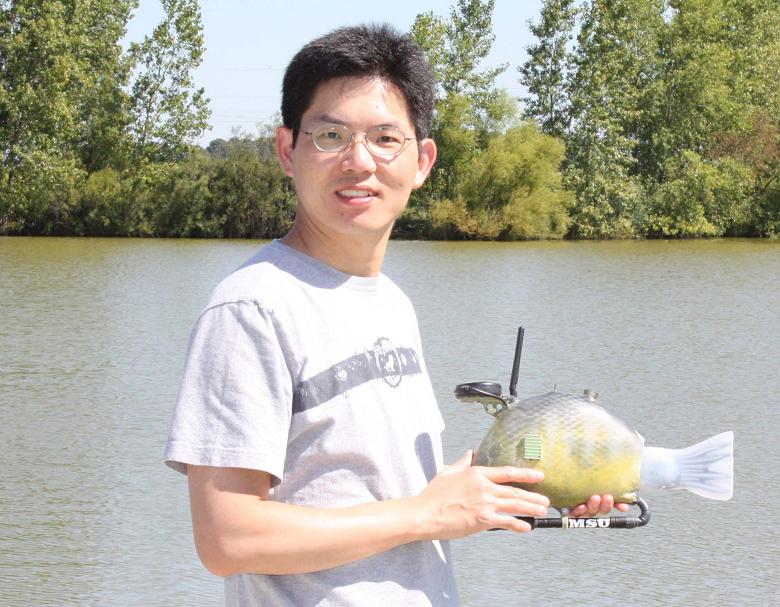There is a new pollution monitoring device that is manufactured by three-dimensional (3D) printing and swims in the water. Scientists at the Michigan State University have come up with robotic fish that swim in schools and can act as watchdogs for pollution in water bodies such as lakes, rivers, streams and oceans.
 Xiaobo Tan, Associate Professor with a robotic fish.
Xiaobo Tan, Associate Professor with a robotic fish.
MSU associate professor and electrical engineer Dr. Xiaobo Tan said that fish behave in a way that underwater vehicles can’t yet equal. They can swim in sync with each other and can make sharp turns and change directions in the blink of an eye.
This makes it a good idea for fish to be used to monitor underwater pollution. The MSU team built a number of patterns and tested them using inexpensive copies from a 3D printer. The printer lays thin layers of plastic on top of each other constructed of different plastics that the researchers feed into the printer. These layers-upon-layers create 3D objects that are flexible and soft in some parts, and hard and rigid in other parts.
The robotic fish have tail fins made out of electroactive polymers. They respond to electricity and do not need any motors or gears. Tan said that these materials are often referred to as artificial muscles because they change their shape in response to electrical stimulation, much like muscles do. But by binding several strips of artificial muscle together in sheets, they can make flexible artificial fins that twist, curl and bend in complex ways, just like the real thing.